Time is running out to tell USDOT to measure more than just vehicles
These two streets in Nashville, Tennessee are very different and have different functions. Why does the U.S. Department of Transportation want to measure their success the same way?
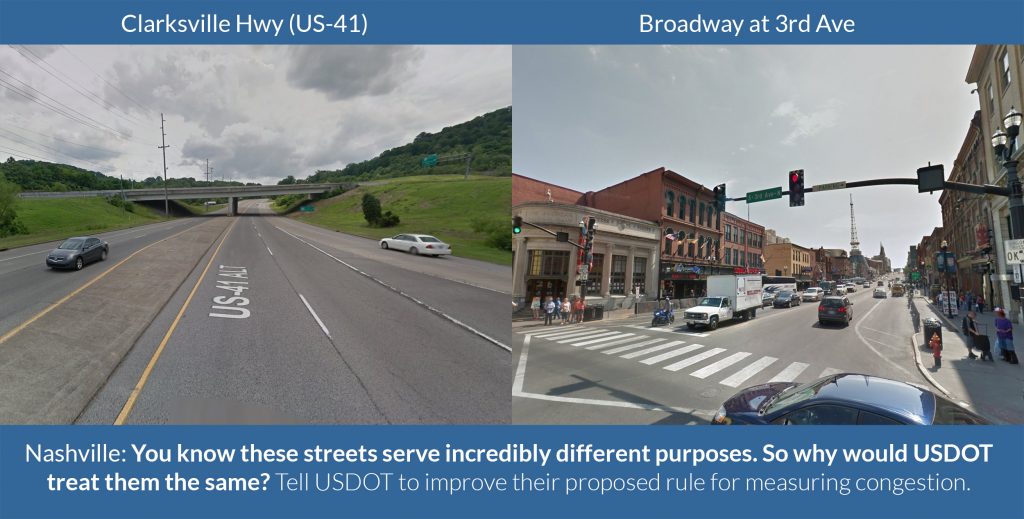
One is intended to move goods and people, largely in vehicles, quickly between two points. The other moves people — in cars, in buses, on bikes, on foot — while also creating a framework to produce lasting value, economic activity, and a sense of place.
It doesn’t make sense to measure the success of these streets the same way. Yet that’s exactly what USDOT is proposing with new rules for how states and metro areas would have to measure and address congestion — prioritizing vehicle speed above almost all other criteria.
The most successful city streets have to use limited space to move people efficiently, whether walking, biking, taking transit or driving. Yet this congestion rule as it is currently written would count only vehicles.
A street that moves a lot of people should never be considered unsuccessful, even if it doesn’t necessarily move a lot of cars.
The proposed rule would make driving fast the ultimate goal of our transportation system, regardless of what type of road or street you’re on. Should driving fast be the highest priority on main streets where people go to shop or sit and eat at an outdoor café? Should moving cars quickly be the top priority in residential neighborhoods where children might be biking or walking?
A street that creates value, economic prosperity and a sense of place should never be considered unsuccessful, even if it doesn’t necessarily move a lot of cars.
We have a chance to change this rule, but time is running out. Public comments on the rule close this week, and now is a crucial time to speak out.
Tell USDOT to improve their proposed rule and send a letter today.
You can view or share examples from a handful of other cities below.
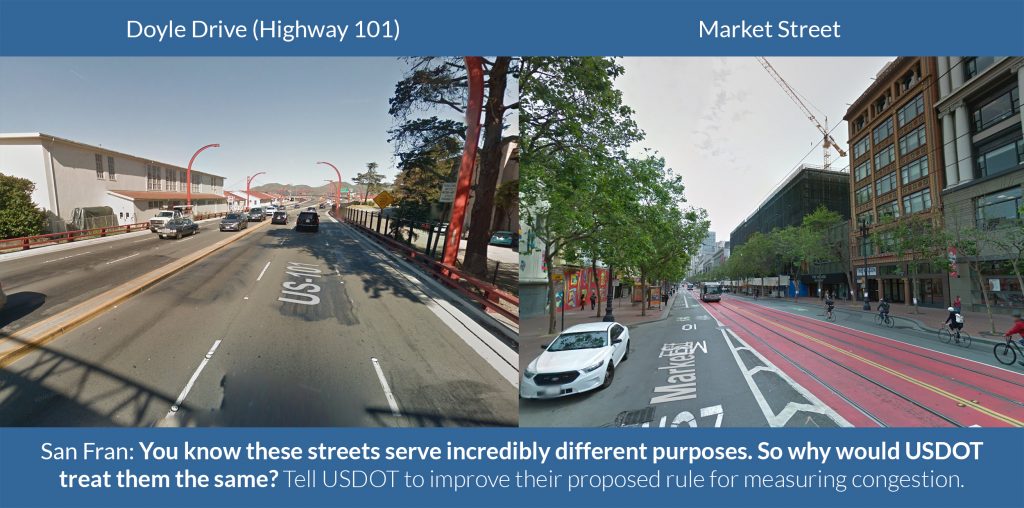
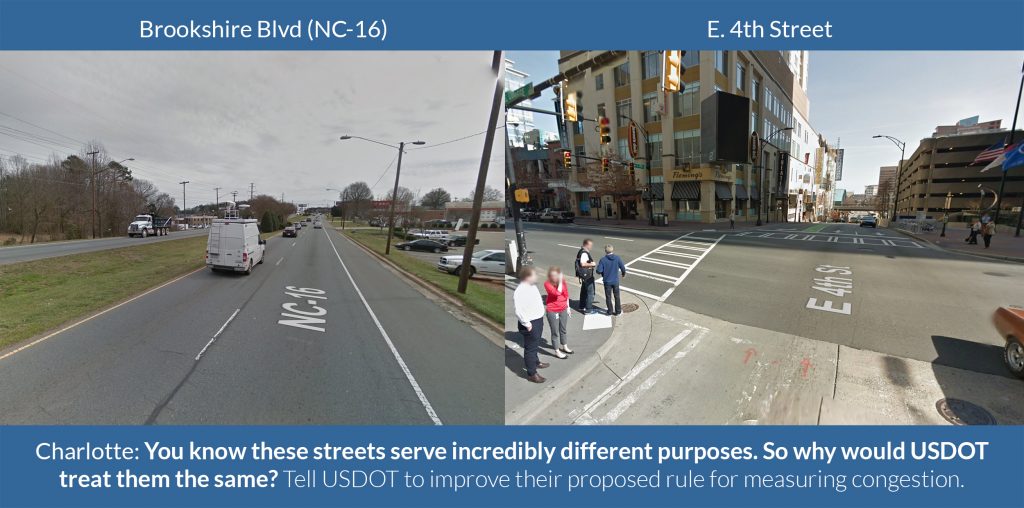
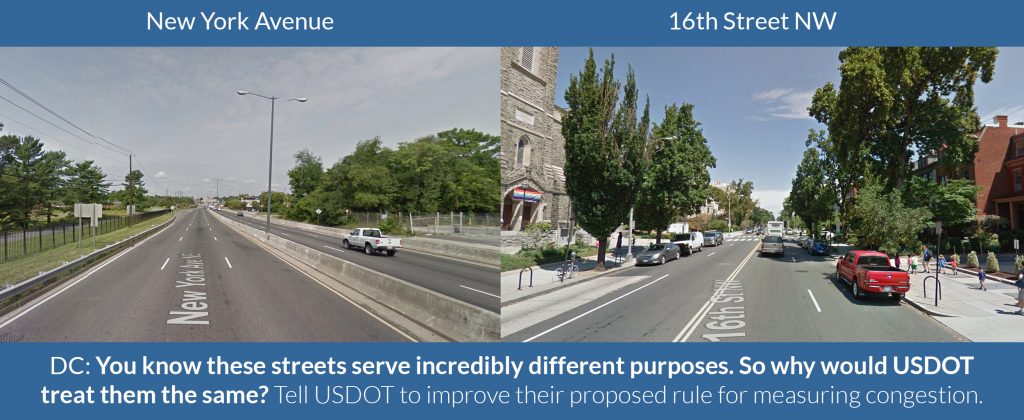
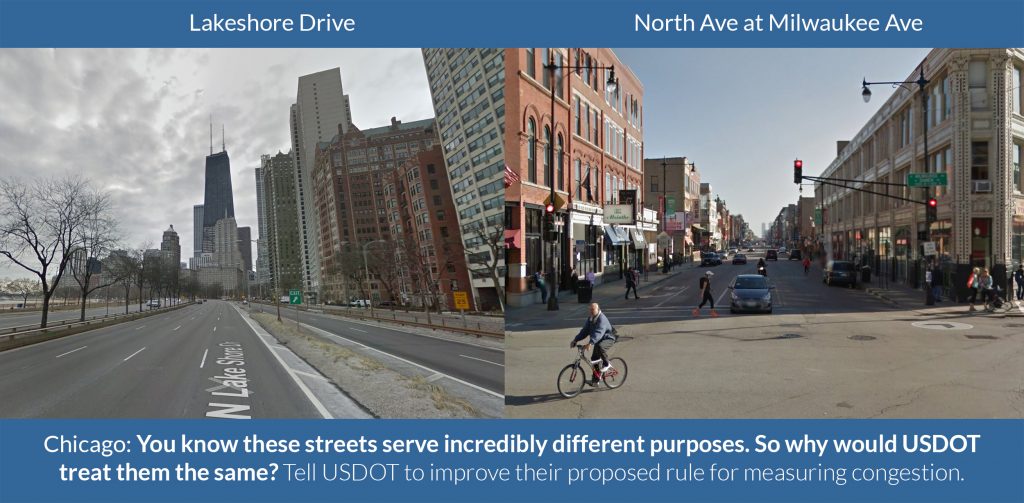
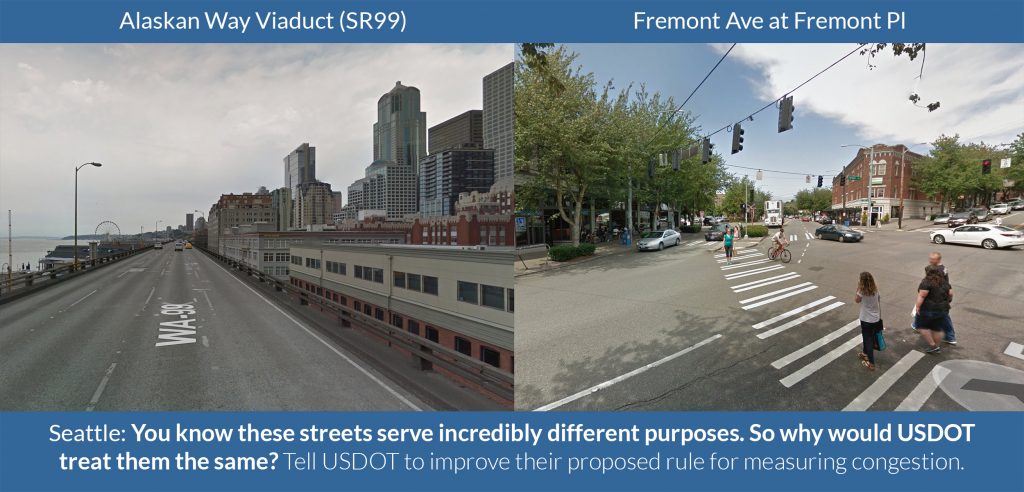
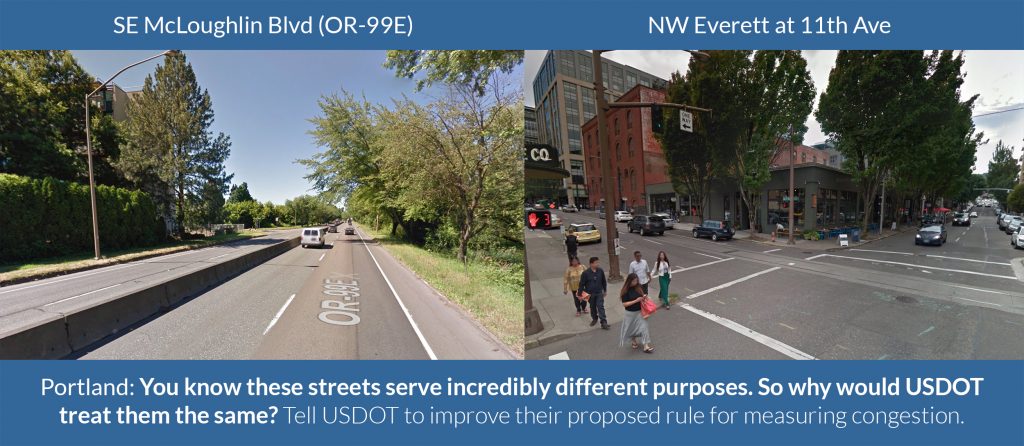
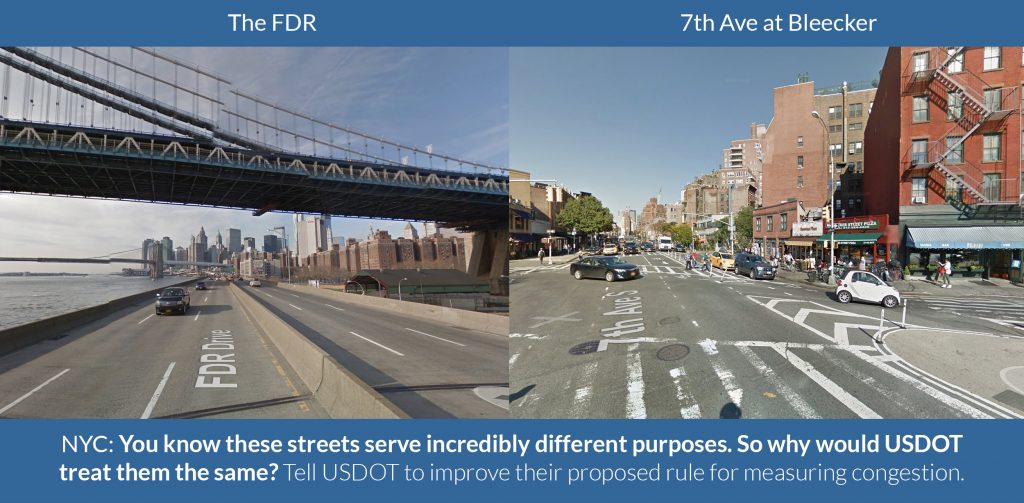
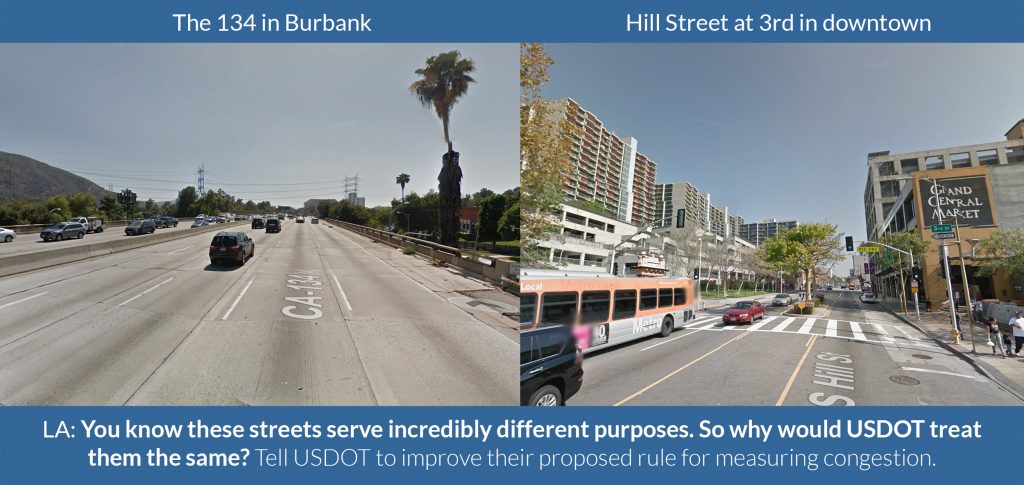
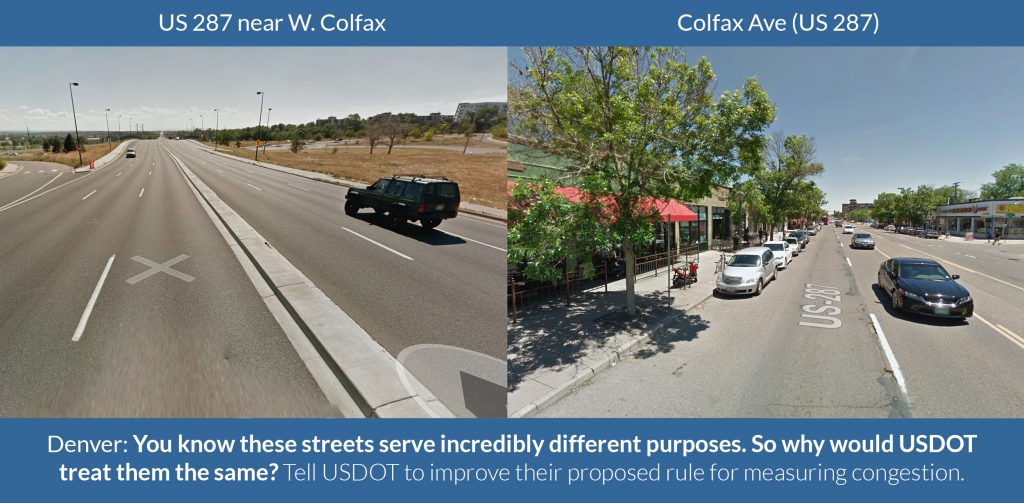
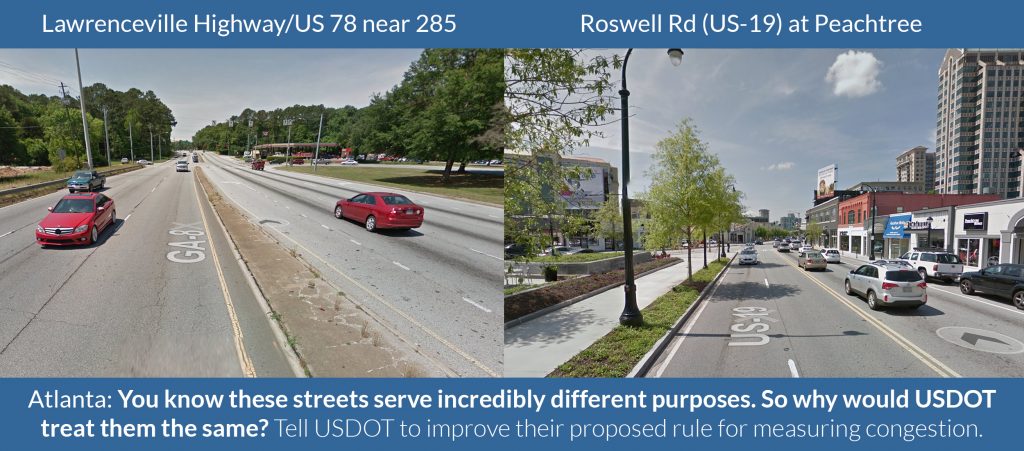




















Pingback: Today’s Headlines | Streetsblog St. Louis
Pingback: Earth to U.S. DOT: Streets Succeed When They Do More Than Move Cars | Streetsblog.net